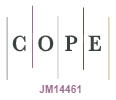The online news genre and the fake news phenomenon: reflexivity and agentivity in basic education
DOI:
https://doi.org/10.5585/eccos.n70.25011Keywords:
critical literacy, fake news, news genre, basic educationAbstract
This article focuses on the process of reading copies of the online news genre and the phenomenon of Fake News, with the aim of understanding the extent to which Basic Education students position themselves and reflectively perceive themselves as agents in the construction of meanings. Starting from an interdisciplinary perspective, this work is based on the Theories of Communication and Linguistics, so that, articulated, both streams provide theoretical subsidies for evaluating the procedures used by students for reading and discursive representation about online news and Fake News. This investigation, based on a Case Study methodology, whose universe of analysis comprises Basic Education students from a public school class in Santa Maria (RS), focuses on the understanding of these students regarding Fake News, news and their readings of these texts. The corpus was generated from a semi-structured questionnaire using the Google Forms platform, with open and closed questions. The analysis shows that the research participants are able to map, identify and discursively represent what Fake News is. Considering, however, the reading strategies carried out by the students, the data show that they still do not contemplate the critical-reflective perspective proposed by Critical Literacy.
Downloads
References
ALMEIDA, T. Letramento Crítico e o Ensino de Língua Portuguesa: Análise de um livro didático. Fólio – Revista de Letras, Vitória da Conquista, v. 12, nº 1, p. 1419-1433, jan./jun. 2020. Disponível em https://doi.org/10.22481/folio.v12i1.5768. Acesso em 11 jul. 2022.
BARTON, E. Linguistic Discourse Analysis: How the Language in Text Works. In: BAZERMAN, C.; PRIOR, P. (Ed.). What Writing Does and How It Does It: An introduction to Analyzing Texts and Textual Practices. New Jersey: Lawrence Erlbaum Associates, 2002.
CARBONIERI, D. Descolonizando o Ensino de Literaturas de Língua Inglesa. In: JESUS, D. M. de; CARBONIERI, D. (Org.). Práticas de Multiletramentos e Letramento Crítico: outros sentidos para a sala de aula de línguas. Campinas, SP: Pontes Editores, 2016.
FRANCISCATO, C.E. A fabricação do presente: como o jornalismo reformulou a experiência do tempo nas sociedades ocidentais. São Cristóvão (SE): Editora UFS Fundação Oviedo Teixeira, 2005.
HOHLFELDT, A. Hipóteses contemporâneas de pesquisa em comunicação. In: HOHFELDT, A; MARTINO, L. C.; FRANÇA, V. V. (org.), Teorias da comunicação: conceitos, escolas e tendências. Petrópolis: Vozes, 2001.
IRETON, C; POSETTI, J. (Org.). Jornalismo, fake news & desinformação: manual para educação. Paris: Unesco, 2019. Disponível em: https://unesdoc.unesco.org/ark:/48223/pf0000368647. Acesso em 16 de mai. 2022.
JANKS, H. Panorama sobre letramento crítico. In: JESUS, D. M.; CARBONIERI, D. Práticas de Multiletramentos e Letramento Crítico: outros sentidos para a sala de aula de línguas. Campinas: Pontes Editora, 2016.
MENESES, J. P. Sobre a necessidade de conceptualizar o fenómeno das fake news. Observatório (OBS*), Special Issue, vol. 12, nº 4, pp. 37-53, 2018. Disponível em: http://obs.obercom.pt/index.php/obs/article/view/1376/pdf. Acesso em: 10 de jul. 2021.
MENEZES JORDÃO, C. No tabuleiro da professora tem...Letramento Crítico? In: JESUS, D. M.; CARBONIERI, D. Práticas de Multiletramentos e Letramento Crítico: outros sentidos para a sala de aula de línguas. Campinas: Pontes Editora, 2016.
PENA, F. Teoria do Jornalismo. São Paulo: Contexto, 2005.
PINTON, F. M, BORDIM, C. T., SCHMITT, R.M. Letramento Crítico em atividades de leitura em livros didáticos de Língua Portuguesa do Ensino Fundamental. In: Caminhos em Linguística Aplicada. Universidade de Taubaté, 2022. Disponível em: http://periodicos.unitau.br/ojs/index.php/caminhoslinguistica/article/view/3383. Acesso em: 28 de out. 2022.
SHOR, I. “What is Critical Literacy?”, Journal of Pedagody and Pratice: Vol.1: Iss. 4. Artigo 2, 1999. Disponível em: https://digitalcommons.lesley.edu/jppp/vol1/iss4/2 . Acesso em 15 de jun. de 2022
TANDOC JR., E.C; LIM, Z.W., LING, R. Defining “Fake News”: A Typology of Scholarly Definitions. Digital Journalism 6 (2), 137-153. London, 2018. Disponível em: https://edisciplinas.usp.br/pluginfile.php/4948550/mod_resource/content/1/Fake%20News%20Digital%20Journalism%20-%20Tandoc.pdf. Acesso em 15 de mai. 2022.
TRAQUINA, N. Teorias do Jornalismo. A tribo jornalística: uma comunidade interpretativa transnacional. Florianópolis: Insular, 2005.
TRÄSEL, M., LISBOA, S., VINCIPROVA, G. R. Pós-verdade e confiança no jornalismo: uma análise de indicadores de credibilidade em veículos brasileiros. In: Brazilian Journalism Reasearch, Fake news: desafios e riscos para o jornalismo contemporâneo. Associação Brasileira de Pesquisadores em Jornalismo (SBPjor), 2019. Disponível em: https://doi.org/10.25200/BJR.v15n3.2019.1211. Acesso em: 10 de jul. 2021.
WARDLE, C., DERAKHSHAN, H. Reflexão sobre a “desordem da informação”: formatos da informação incorreta, desinformação e má-informação. In: IRETON, C; POSETTI, J. (Org.). Jornalismo, fake news & desinformação: manual para educação. Paris: Unesco, 2019. Disponível em: https://unesdoc.unesco.org/ark:/48223/pf0000368647. Acesso em 16 de mai. 2022.
Downloads
Published
How to Cite
Issue
Section
License
Copyright (c) 2024 Eduardo Silva Simioni, Francieli Matzenbacher Pinton

This work is licensed under a Creative Commons Attribution-NonCommercial-ShareAlike 4.0 International License.
- Abstract 276
- pdf (Português (Brasil)) 141






